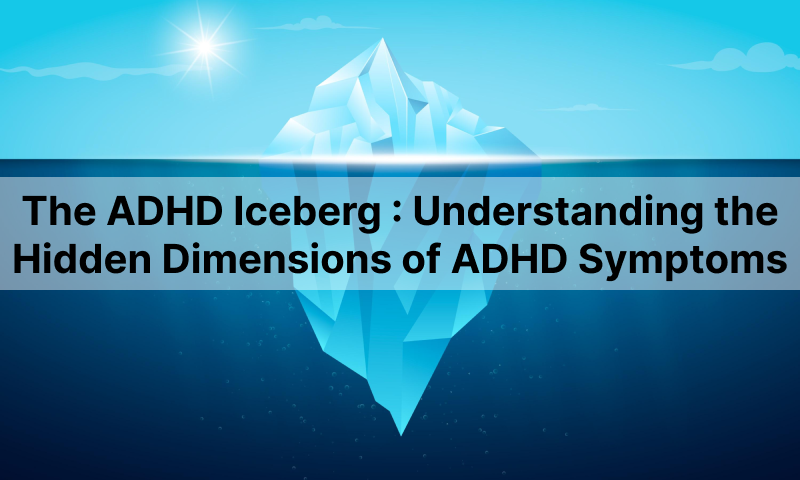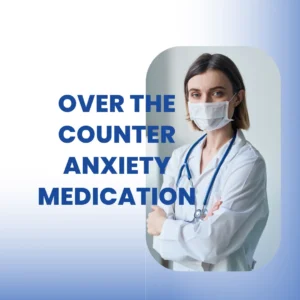Attention Deficit Hyperactivity Disorder (ADHD) is often viewed through the lens of hyperactivity, inattention, and impulse control, but its true complexity goes much deeper. Much like an iceberg, the visible symptoms are just the tip of the ADHD spectrum, with many underlying traits and behaviors going unnoticed.
Beyond the well-known symptoms, ADHD also encompasses challenges related to emotional regulation, hypersensitivity, and cognitive difficulties such as the “ADHD freeze.” This blog will delve into these lesser-known aspects, exploring how ADHD affects individuals uniquely. We’ll uncover the hidden symptoms and discuss strategies for managing this multifaceted disorder.
What is ADHD (Attention Deficit Hyperactivity Disorder)?
ADHD is a neurodevelopmental condition marked by persistent issues with inattention, hyperactivity, and impulsivity. However, it also includes hidden challenges such as hypersensitivity, emotional regulation problems, and functional freezing, which can deeply affect daily life and well-being.
To truly understand ADHD, it’s essential to explore both its prominent and subtle symptoms. By addressing these lesser-known aspects, we can offer better support and foster a more inclusive environment, helping individuals with ADHD manage their condition effectively and thrive.
Is ADHD a Spectrum?
ADHD is a uniform condition but according to recent research it is suggested that ADHD is more like a spectrum having large numbers of symptoms that are totally different in every person. The theory of the ADHD spectrum confesses that not everyone with ADHD can face the same symptoms or the same discomfort.
The idea of the ADHD spectrum helps us to explain why and how some individuals struggle from hypersensitivity and some other individuals face lack of attention towards tasks. This variation comprises rational and emotional factors such as dysregulation of emotions and functional freezing during tasks.
The ADHD Iceberg – Something Lies Beneath the Surface

The most powerful metaphor used to describe ADHD is “ADHD ICEBERG” . It means the symptoms of this disorder like restlessness, lack of attention, distractive mind are easily recognised by people while the major symptoms lie below the surface which is hidden from everyone but can be impacted by one’s daily routine.
The major symptoms that are forgetfulness, punctuality and aggression often leads to frustration or overwhelm, So those who are close to the person having ADHD disorder will never experience the full image of that person. But through proper support and attention one can know or understand what lies beneath the ADHD iceberg and how they would live with that.
ADHD Hypersensitivity – A Challenge
One of the major aspects of ADHD is hypersensitivity which people don’t often know. Most of the ADHD patients are highly sensitive from things like noises, crowd, bright lights and some certain textures. These things lead them to irritation,stress, tension and discomfort in daily life.
The people with ADHD are also very sensitive to rejection , criticism or small arguments. Sometimes they show extreme aggression on just a minor thing. The patient can never experience any kind gathering or some kind of ceremony because of noises and bright lights and meeting different people.
In this situation the patient could never understand or focus on what they are instructed to do or even how they can answer one’s simple question. These people are often distracted and don’t focus on anything when two or more people are talking or discussing something.
Functional Freeze – When ADHD Paralysis Strikes
Patients having ADHD disorder will usually experience functional freezing which means they always need long duration and a personal space to think and focus on a task otherwise they will be stuck in between the middle of their task and will be unable to complete it just because their mind is distracted all the time.
Functional freezing occurs when the patient is going through a phase of aggression or frustration when he knows his work or ability well but cannot describes it or show their efficiency on the mean time when it is needed, This is the time when the patient’s mind completely paralysis and he became unable to respond or take decisions.
The people with ADHD may struggle with discomfort or a fatigue type of laziness when he/she is unable to plan,organize or focus on their tasks as they are instructed. They are unable to show their skills , talent and their mind full of great ideas because they are not focused on one person. Their mind is always distracted by multiple thoughts which lead their brain to shut down completely.
ADHD Spectrum and Emotional Dysregulation
The term spectrum is more likely to used for ADHD because the person with this disorder has also a lot of phases and chapters itself that no one can understand easily nor a person can reveal himself easily to anyone. Some emotional dysregulation in the person means they are highly sensitive having intense mood, aggression and frustration issues on even a minor event.
They are very bad at expressing their feelings and emotions towards anything. The person often plays unnoticed but significant roles in daily life which he never let anyone notice or even told and thus get rejection or criticism which lead him/her to frustration or extreme emotional pain. So the patient should have been understood and supported in their mental well-being.
Is ADHD on a Spectrum of Neurodiversity?
Taking an eagle eye on ADHD as a spectrum within the disorder itself, there is a bundle of knowledge as a part of the neurodiversity spectrum. It refers to the concept that neurological disorders like autism, dyslexia and ADHD are natural alterations in the brain rather than a disorder which needs to be fixed. Just to promote acceptance of various ways of thinking and processing information.
As a part of the neurodiversity spectrum helps people to recognize their creativity, adaptability and solution to a problem, this often leads to the challenges facing ADHD. The person should be treated supportive and given an inclusive environment who is facing neuro disorders.
The Importance of Recognizing the Full ADHD Iceberg
Understanding the full extent of ADHD for providing effective support to the patient. Individuals with ADHD may face challenges related to hypersensitivity, emotional dysregulation, and functional freezing that are not immediately apparent but have a profound impact on their daily lives. By shedding light on hidden symptoms of ADHD, we can have a compassionate and inclusive approach related to treatment.
We can cure a patient by providing suitable environment adjustments , raising awareness and therapy or giving them full support to understand them and build their confidence level as they can start feeling like normal people.
Conclusion
Instead of focusing solely on the visible symptoms of ADHD, it’s crucial to address the hidden challenges that often go unnoticed. Lesser-known symptoms like hypersensitivity, functional freezing, and emotional pain can significantly impact an individual’s daily life. By increasing awareness and providing practical strategies, we can better support those with ADHD and improve their overall well-being.
Creating a more inclusive society means understanding and accommodating the unique needs of individuals with ADHD. With empathy and support, we can help them build confidence, stay focused on their goals, and thrive in any environment. It’s essential to foster an environment where people with ADHD feel valued and empowered to openly discuss their experiences and contribute fully to their communities.







